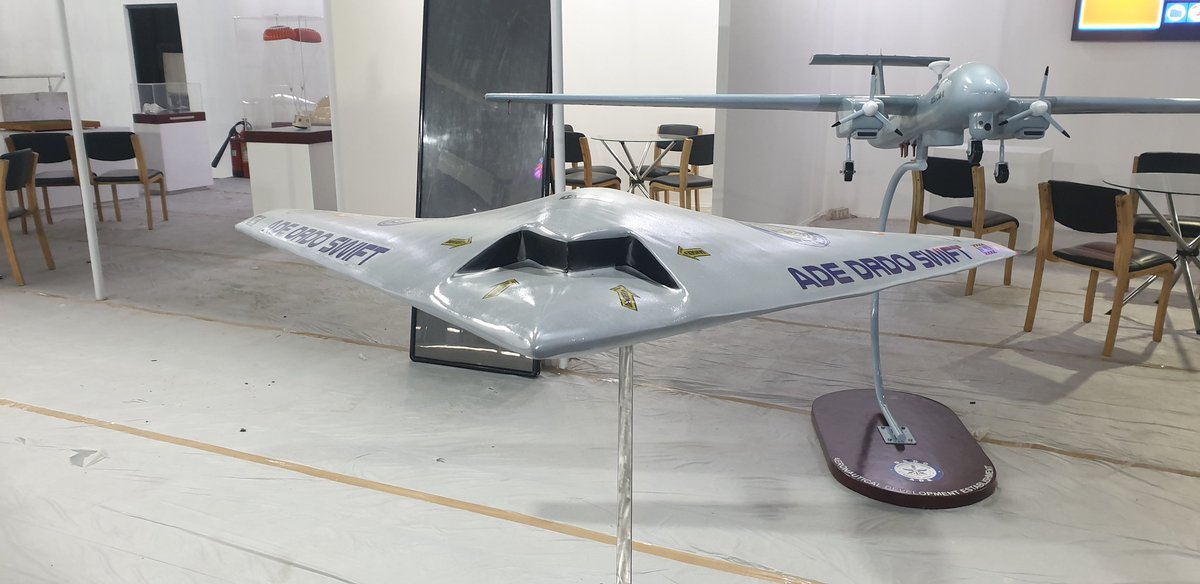The Autonomous Flying Wing Technology Demonstrator, said to be the forerunner of future combat drones, made its first flight test on Friday in India. On Friday, the demonstration vehicle underwent testing at the Chitradurga, Karnataka, Aeronautical Test Range. According to the Defence Research and Development Organisation, it demonstrated a flawless flight while being piloted in a fully autonomous mode (DRDO).
The vehicle took off, automated navigation traced the predetermined sites, waypoint navigation, and touchdown all happened just as planned.

The Aeronautical Development Establishment (ADE), a DRDO unit with a Bengaluru location that specialises in unmanned aerial vehicles, flight simulators, pilotless target aircraft, flight control systems, and air weaponry, has created the demonstrator. Rajnath Singh, the defence minister, congratulated the DRDO. According to Rajnath Singh, the development of autonomous aircraft is a significant step forward and will open the door for “Aatmanirbhar Bharat” in terms of essential military equipment.
The flying wing structure of the technology demonstration was emphasised by DRDO officials. This structure describes a tailless fixed-wing aircraft that stores its cargo and fuel in its main wings instead of having the specified fuselage-like structure present in conventional aircraft. If implemented precisely, the concept, according to DRDO experts, has the ability to provide excellent fuel efficiency and stealth, as proved by some of the most sophisticated bombers in the arsenal of the USA, such as the B-2 bomber.
The flying wing aircraft type, they said, has a significant operational advantage due to its low reflective cross sections, which results in a low radar signal and makes it a stealth machine. The aircraft’s form also results in relatively little drag, or air resistance. However, this unusual architecture has stability problems as well, necessitating the use of additional mechanisms.
The undercarriage, landing gear utilised for takeoff and landing, the full flight control, along with the avionics systems used for the demonstration, have all been produced domestically. The airframe, which is the fundamental mechanical component of the aircraft, was also created domestically. A compact turbofan engine, a form of air-breathing jet engine, powers the vehicle.
According to DRDO experts, this technology demonstration will go through more testing to look at various technologies for the creation of future combat drones. The size and power of the vehicle would likewise be put to the test. According to sources, the DRDO is developing an autonomous stealth Unmanned Combat Air Vehicle (UCAV) particularly for the Indian Air Force as a forerunner to the autonomous flying wing technology demonstrator. It is also rumoured that an Indian Navy deck launched variant is in the works. The UCAV will be able to fire precision-guided weapons and missiles.
The DRDO has previously created a number of drones with varying capabilities and operational responsibilities, including Nishant, Rustom, Tapas, and Lakshya, among others. The DRDO also presented its anti-drone technology in July of last year with the intention of countering hostile strikes. In order to neutralise enemy drones, the system is capable of counterattacks such as detection, soft kill (to block a drone’s communication lines) and hard kill (using a laser to destroy the drone).
The strategic value of having stealth combat drones in the arsenal has been underlined by several recent instances, both in India and overseas. While the Indian armed services presently use a combination of locally and internationally built drones, analysts indicated that a wholly domestic stealth warfare machine is urgently needed.
The agency has not formally disclosed the information, despite some rumours claiming that the UCAV would be called Ghatak (deadly) or Autonomous Unmanned Research Aircraft.











